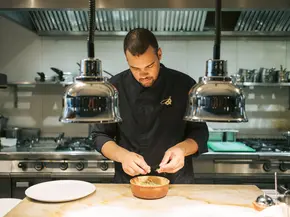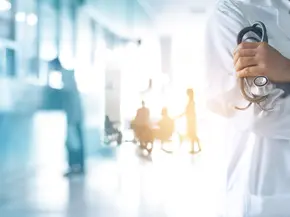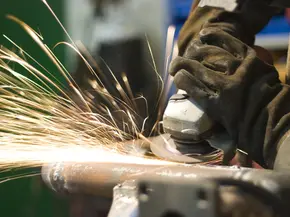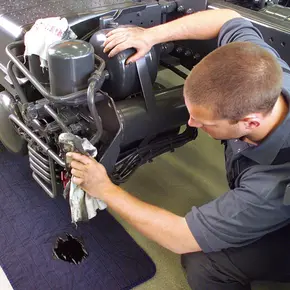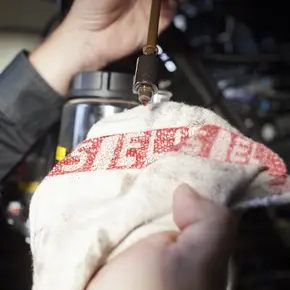Elis Apeldoorn: Our remarkable plant specialised in industrial wiping
Wipers: A sustainable alternative with an all-in-one service
Apeldoorn cleans and returns over 50 million wipers a year.
Our wiper cleaning service is ISO 9001-2015 and ISO 14001-2015 certified. It involves washing, pressing and drying the fabric, as well as cleaning the packagings used for storing and transporting the wipers.
How does this service work?
Back in the laundry facility, dirty wipers are sorted by type and colour, then washed in batches of around 1,000 units. Once they have been washed, the excess water is extracted from the wipers. They are then passed through a dryer, where they are dried for 20 minutes at 125°C. Finally, the wipers are checked for metal residue and undergo visual quality control. The wipers are then packed for each customer to be transported and delivered to your premises by our Elis service agents. We also use this visit to collect your used and dirty wipers, thus completing the cycle.
How do we optimise logistics ?
We do our utmost to make every minute of transport profitable and thereby limit our carbon footprint. The clean products are prepared with their destination in mind. Whenever we deliver clean items, we collect dirty ones. Smart route planning allowed us to reduce the distances travelled by nearly 25,000 km in 2021.
Apeldoorn and its circular washing process
The added value of our plant in Apeldoorn lies not just in its rental and cleaning services and the logistical benefits we can achieve, as there is another advantage to our circular washing process: the reuse of energy and materials. By entrusting us with your dirty textiles, you are making a significant contribution to a circular washing process.
How the circular washing process works:
After cleaning, the wash water is full of fats, oils, industrial residue and metal from a range of industries. This dirty water is completely purified and then reused to limit the amount of water used to 3 litres per kilo of linen. Only water that has evaporated is replaced.
Raw materials for new products:
After the water is treated, 100% of the residue from this process is reused. Due to their high calorific value, these residual substances are used as secondary fuel in the cement industry. Waste is thus transformed into a sustainable raw material, used until the end of its life cycle.
Reusing the energy from the washing and water purification processes
All emissions from washing and water treatment are suctioned and cleaned by an afterburner at a temperature of more than 700°C. The steam from these emissions is then used to heat the Apeldoorn building and keep the wash water at the desired temperature.
Elis is committed to continuously reducing its environmental footprint.
By continuing to take action, we are supporting you on your way to making increasingly responsible choices.
This is also a part of circular services at work.
Discover our industrial wiping solutions:
If you need information or a quote for your project, our teams are here to help. Contact us!
*Required fields
Account details


